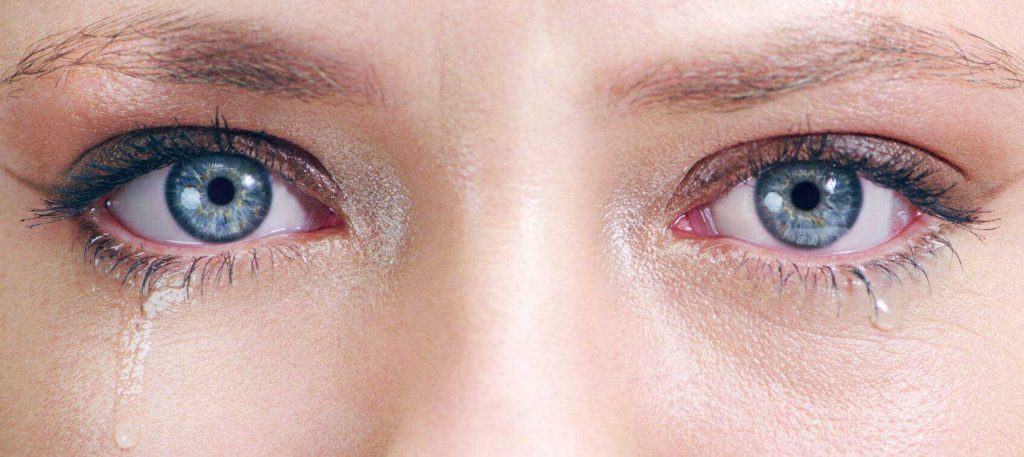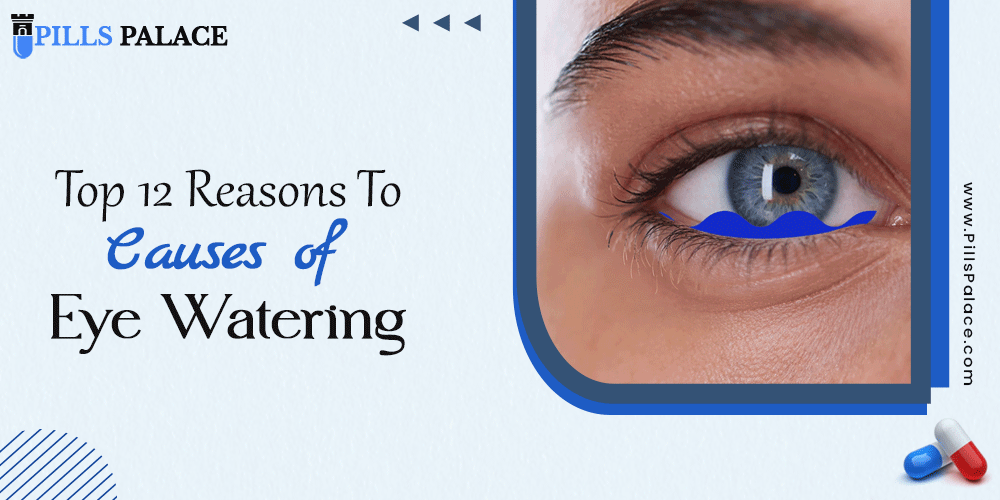Top 12 reasons to Causes of eye watering
Tears perform a number of important functions within your body. They keep your eyes moisturized and aid in cleansing dust and foreign objects. They also form a part that make up your immunity and guards you against infections.
The skin-like follicles under the upper eyelids release tears that contain salt and water. As you blink, tears are released while keeping your eyes dry. Other glands produce oils to keep tears from evaporate too quickly or falling out of your eyes.
The majority of tears flow through your tear ducts. They eventually disappear. If you are producing excessive tears, they can clog the tear ducts and you get eye watering. Most of the time eye watering go away without treatment, however, it may become a long-term issue.
Contact your doctor if suffer from persistent eye watering, especially when it’s accompanied by other signs.
How Watery Eyes (epiphora) diagnosed?
The doctor or specialist in eye care will inspect your eyes as well as both the lower and upper eyelids in order to determine the reason for the eye watering. A scope allows your doctor to examine the blood vessels that surround your eyes and also check the pressure of your eyes.

If you experience any pus or discharge that is coming from your eyes you can have it tested to determine if you are suffering from a viral or bacterial infection. Another test is to determine the chemical composition that your tears have. A clinical study discovered that those suffering from epiphora had a smaller amount the particles present in tears.
Cause of eye-watering
The two most common causes of eye watering are obstructions in the tear drains and the overproduction of tears.
Blockage of tear ducts
Certain patients are blessed with weak tear ducts. The eyes of new-borns are often watery which usually disappear in a matter of weeks, as the tear ducts begin to develop.
For older children and adults in adults and older children, blocked tear ducts could occur in either or both eyes. They can also be accompanied by other signs that include blurred or dim vision, swelling, crusting of the eyelids, as well as irritation around the eyes.
In some instances these symptoms can be worsened, when exposed to cold or windy temperatures.
The most frequent reason for eye watering in older children and adults is blocked drainage ducts or ones which are too narrow. Narrowed tear ducts are usually formed because of inflammation and swelling.
In the event that the tear ducts narrow or blocked by obstruction, tear are unable to be able to drain and will pile within the sac of tears. Instability of tears in the tear sac raise the likelihood to infection and eye produces sticky liquid that makes the problem more severe.
Canaliculi, the narrow drainage channels that run through the insides of eyes, can get blocked. The reason for this is inflammation or even scarring.
The over-production of tears
Eyes that are irritated can cause more tears than usual because the body is trying to flush the irritant.
The following irritating substances can trigger excessive production of tears in both or one of the eyes:
- Certain chemicals, for instance those found in fumes, and some chemicals, like those in fumes and even
- infective conjunctivitis or pink eye
- allergic conjunctivitis
- eye injury or eye, for example, scratches or the appearance of small fragment of dirt or pebble
- trichiasis in which eyelashes expand outward
- Ectropion occurs when the lower eyelid is turned towards the outside
Based on the cause in the case, excessive tear production caused by irritation can be accompanied by symptoms such as redness, inflammation as well as itching, blurred vision discomfort, and an increase in sensitization for light.
A few people also experience tears that have a high, or fat-rich. This can cause with the uniform spread of the liquid across the eye, resulting in dry patches that can become red and inflamed, which causes the eye to release more tears.
The exposure to wind, smoke or cold weather may trigger a surge in tears temporarily. The same can be the case with crying, laughing as well as nausea.
Other causes
There are many reasons for eye watering. Other conditions that could result in an excess of tears from one eye or in both are:
- Keratitis
- A stye, or the chalazion, the lump that may develop around the eyelid
- Bell’s palsy
- dry eyes
- allergies, which includes the hay fever
- Meibomian glands
- the use of certain medicines
Sights and symptoms
Dry, irritated skin on your eyes lids can cause your eyes to appear scaly, flaky and rough.
If your eyelids are dry and a dry eye, you may also notice the formation of a crust on your eyelids as well as in your eyelashes. There could be redness around the eyelids and around them.
Treatments
There are various over-the counter and prescription drugs for treating dry eyelids according to the severity of the problem such as Careprost.

If you suffer from contact dermatitis, your doctor might recommend an over-the counter or prescription topical corticosteroid in order to combat the dry skin. Corticosteroids help reduce inflammation. Doctors may only recommend an eyelid corticosteroid only for a brief period of time due to the thin the eyelid skin.
Your physician may also suggest corticosteroid for the treatment of Atopic skin ailment. Antihistamines, as well as other topical ointments or moisturizers are also utilized to help reduce inflammation and itching.
The most effective method to treat the condition is to maintain proper hygiene and get rid of eye-crusts or give a try to Careprost Eye Drops. Your doctor might prescribe eye drops containing steroids or artificial tears to preserve your eyes moist.
There are also topical prescriptions and oral antibiotics that can be used for treating blepharitis caused by bacteria. Visit Pillspalace for getting all these medications.
Reference:
https://www.healthline.com/health/watery-eyes
https://www.mayoclinic.org/symptoms/watery-eyes/basics/causes/sym-20050821

